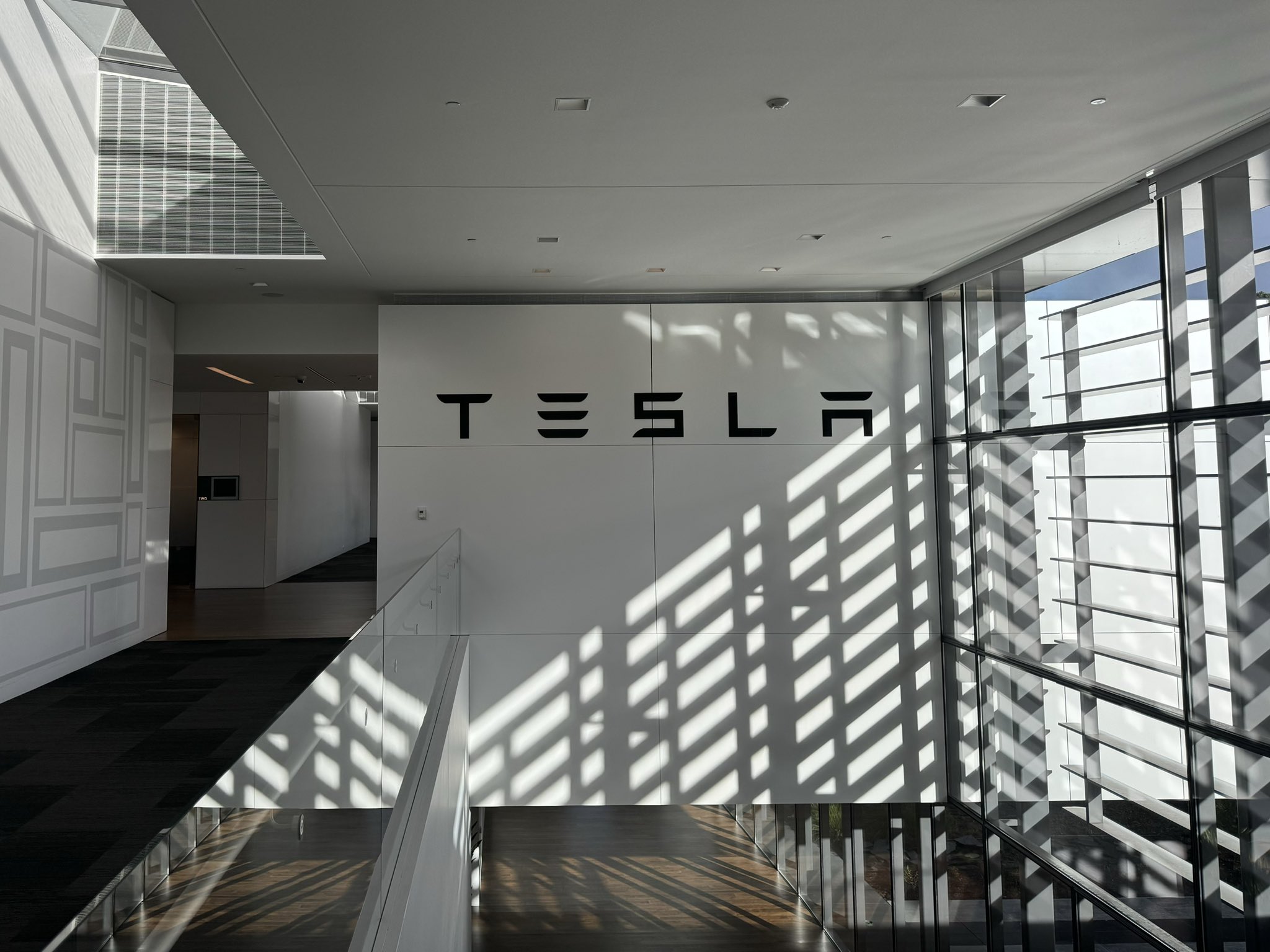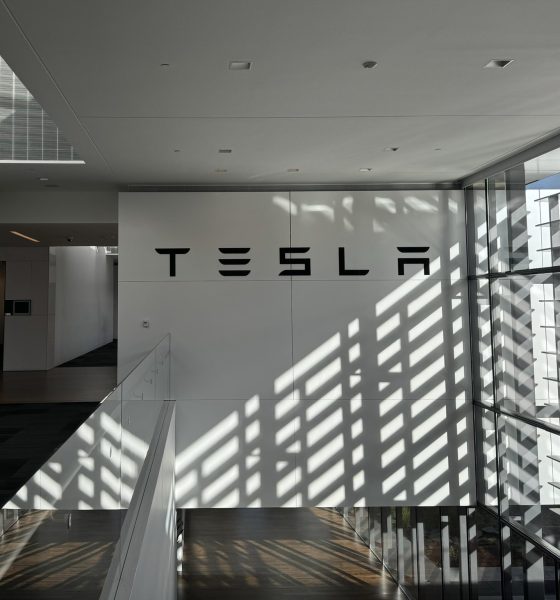Tesla investors currently have the chance to vote on a number of proposals for the company’s upcoming shareholder’s meeting, with CEO Elon Musk’s 2018 pay package hanging in the balance after it was struck down by a Delaware judge. In recent weeks, a number of Teslarati readers have shared how they voted or plan to vote on the proposal, with about a month left to go until the meeting.
After Delaware Judge Kathaleen McCormick voided the previously approved $56 billion pay package for Musk in January, both Musk and the company have appealed the decision, and the board of directors has launched a vote on ratifying the package for the stockholder’s meeting next month. Voting has been open for the past few weeks, and following our recent story detailing one of Tesla’s largest shareholders as he criticized Musk and suggested voting “no” on the measure, many have said they voted in favor of the proposal.
Tesla also launched a website dedicated to explaining how shareholders can vote, and detailing the board’s voting recommendations. Crucially, the board has recommended “yes” votes on both proposals three and four, which concern Tesla’s potential move to re-incorporate in Texas instead of Delaware, and the pay package vote for Musk, respectively.
The annual shareholder’s meeting will be held on June 13, and shareholders can continue to vote on the proposals between now and then. Tesla has also shared a video on social media encouraging investors to vote in favor of this, and the company’s incorporation move from Delaware to Texas.
We have put forward two especially important proposals for our Annual Meeting of Stockholders—and we need your vote.
Protect your rights as stockholders & protect the value of your investment by voting FOR the ratification of the 2018 CEO Performance Award & FOR Reincorporating… pic.twitter.com/ONmB7oZfyM
— Tesla (@Tesla) May 20, 2024
How Teslarati readers are voting on Musk’s 2018 pay package (so far)
Following our recent stories, 88 respondents have reached out and told us how they were voting, or planned to vote, on proposal three regarding Musk’s previously approved pay package. Of them, about 66 percent said they had voted or would vote in favor of ratifying Musk’s 2018 compensation plan, while around 30 percent said they voted or would vote against it. The remaining respondents, representing just over 3 percent, said that they were still undecided on the vote.
Those who responded varied in their number of shares; while most did not include how many shares they were voting for, others ranged from having just a few shares to over 7,000 shares.
To be sure, this is an extremely small sample size, especially given the sheer number of shareholders and Tesla shares out there. This also does not take into consideration the number of shares owned by each respondent, though it gives a small overview of how individual Tesla shareholders (who took the time to respond to recent stories) voted on proposal three. In addition, shareholders still have a few weeks left to cast their votes, and many could still be mulling over their vote on the proposal.
The board explains its recommendation for shareholders to vote “yes” by citing the fact that Musk already performed the work needed to earn the previously approved pay package. Some have noted that the CEO isn’t currently being paid for his past several years with the company, as a result of the package being struck down. Others have criticized Musk and Tesla for recent layoffs and his sharing of political views, which they say is why they would vote “no” on the proposal.
“Elon has not been paid for any of his work for Tesla for the past six years… That strikes us, and the many stockholders from whom we already have heard, as fundamentally unfair,” wrote Board Chair Robyn Denholm on the subject last month.
“We do not think that what the Delaware Court said is how corporate law should or does work. If it is legally advisable, we suggest simply subjecting the original 2018 package to a new shareholder vote.”
Musk also defended his pay package following the January decision, as well as his hopes for more voting control amidst the rapid development of artificial intelligence (AI) products.
Note: This article will be updated periodically up until Tesla’s Annual Stockholder Meeting on June 13. Last updated 6/4/24.
Musk responds to pay case lawyers requesting $6 billion in Tesla shares
What are your thoughts? Have you voted on proposal three of the upcoming meeting, and if so, how did you vote? Let me know at zach@teslarati.com, find me on X at @zacharyvisconti, or send us tips at tips@teslarati.com.

News
Tesla aims to combat common Full Self-Driving problem with new patent
Tesla writes in the patent that its autonomous and semi-autonomous vehicles are heavily reliant on camera systems to navigate and interact with their environment.

Tesla is aiming to combat a common Full Self-Driving problem with a new patent.
One issue with Tesla’s vision-based approach is that sunlight glare can become a troublesome element of everyday travel. Full Self-Driving is certainly an amazing technology, but there are still things Tesla is aiming to figure out with its development.
Unfortunately, it is extremely difficult to get around this issue, and even humans need ways to combat it when they’re driving, as we commonly use sunglasses or sun visors to give us better visibility.
Cameras obviously do not have these ways to fight sunglare, but a new patent Tesla recently had published aims to fight this through a “glare shield.”
Tesla writes in the patent that its autonomous and semi-autonomous vehicles are heavily reliant on camera systems to navigate and interact with their environment.

The ability to see surroundings is crucial for accurate performance, and glare is one element of interference that has yet to be confronted.
Tesla described the patent, which will utilize “a textured surface composed of an array of micro-cones, or cone-shaped formations, which serve to scatter incident light in various directions, thereby reducing glare and improving camera vision.”

The patent was first spotted by Not a Tesla App.
The design of the micro-cones is the first element of the puzzle to fight the excess glare. The patent says they are “optimized in size, angle, and orientation to minimize Total Hemispherical Reflectance (THR) and reflection penalty, enhancing the camera’s ability to accurately interpret visual data.”
Additionally, there is an electromechanical system for dynamic orientation adjustment, which will allow the micro-cones to move based on the angle of external light sources.
This is not the only thing Tesla is mulling to resolve issues with sunlight glare, as it has also worked on two other ways to combat the problem. One thing the company has discussed is a direct photon count.
CEO Elon Musk said during the Q2 Earnings Call:
“We use an approach which is direct photon count. When you see a processed image, so the image that goes from the sort of photon counter — the silicon photon counter — that then goes through a digital signal processor or image signal processor, that’s normally what happens. And then the image that you see looks all washed out, because if you point the camera at the sun, the post-processing of the photon counting washes things out.”
Future Hardware iterations, like Hardware 5 and Hardware 6, could also integrate better solutions for the sunglare issue, such as neutral density filters or heated lenses, aiming to solve glare more effectively.
Elon Musk
Delaware Supreme Court reinstates Elon Musk’s 2018 Tesla CEO pay package
The unanimous decision criticized the prior total rescission as “improper and inequitable,” arguing that it left Musk uncompensated for six years of transformative leadership at Tesla.

The Delaware Supreme Court has overturned a lower court ruling, reinstating Elon Musk’s 2018 compensation package originally valued at $56 billion but now worth approximately $139 billion due to Tesla’s soaring stock price.
The unanimous decision criticized the prior total rescission as “improper and inequitable,” arguing that it left Musk uncompensated for six years of transformative leadership at Tesla. Musk quickly celebrated the outcome on X, stating that he felt “vindicated.” He also shared his gratitude to TSLA shareholders.
Delaware Supreme Court makes a decision
In a 49-page ruling Friday, the Delaware Supreme Court reversed Chancellor Kathaleen McCormick’s 2024 decision that voided the 2018 package over alleged board conflicts and inadequate shareholder disclosures. The high court acknowledged varying views on liability but agreed rescission was excessive, stating it “leaves Musk uncompensated for his time and efforts over a period of six years.”
The 2018 plan granted Musk options on about 304 million shares upon hitting aggressive milestones, all of which were achieved ahead of time. Shareholders overwhelmingly approved it initially in 2018 and ratified it once again in 2024 after the Delaware lower court struck it down. The case against Musk’s 2018 pay package was filed by plaintiff Richard Tornetta, who held just nine shares when the compensation plan was approved.
A hard-fought victory
As noted in a Reuters report, Tesla’s win avoids a potential $26 billion earnings hit from replacing the award at current prices. Tesla, now Texas-incorporated, had hedged with interim plans, including a November 2025 shareholder-approved package potentially worth $878 billion tied to Robotaxi and Optimus goals and other extremely aggressive operational milestones.
The saga surrounding Elon Musk’s 2018 pay package ultimately damaged Delaware’s corporate appeal, prompting a number of high-profile firms, such as Dropbox, Roblox, Trade Desk, and Coinbase, to follow Tesla’s exodus out of the state. What added more fuel to the issue was the fact that Tornetta’s legal team, following the lower court’s 2024 decision, demanded a fee request of more than $5.1 billion worth of TSLA stock, which was equal to an hourly rate of over $200,000.
Delaware Supreme Court Elon Musk 2018 Pay Package by Simon Alvarez
News
Tesla Cybercab tests are going on overdrive with production-ready units
Tesla is ramping its real-world tests of the Cybercab, with multiple sightings of the vehicle being reported across social media this week.

Tesla is ramping its real-world tests of the Cybercab, with multiple sightings of the autonomous two-seater being reported across social media this week. Based on videos of the vehicle that have been shared online, it appears that Cybercab tests are underway across multiple states.
Recent Cybercab sightings
Reports of Cybercab tests have ramped this week, with a vehicle that looked like a production-ready prototype being spotted at Apple’s Visitor Center in California. The vehicle in this sighting was interesting as it was equipped with a steering wheel. The vehicle also featured some changes to the design of its brake lights.
The Cybercab was also filmed testing at the Fremont factory’s test track, which also seemed to involve a vehicle that looked production-ready. This also seemed to be the case for a Cybercab that was spotted in Austin, Texas, which happened to be undergoing real-world tests. Overall, these sightings suggest that Cybercab testing is fully underway, and the vehicle is really moving towards production.
Production design all but finalized?
Recently, a near-production-ready Cybercab was showcased at Tesla’s Santana Row showroom in San Jose. The vehicle was equipped with frameless windows, dual windshield wipers, powered butterfly door struts, an extended front splitter, an updated lightbar, new wheel covers, and a license plate bracket. Interior updates include redesigned dash/door panels, refined seats with center cupholders, updated carpet, and what appeared to be improved legroom.
There seems to be a pretty good chance that the Cybercab’s design has been all but finalized, at least considering Elon Musk’s comments at the 2025 Annual Shareholder Meeting. During the event, Musk confirmed that the vehicle will enter production around April 2026, and its production targets will be quite ambitious.










